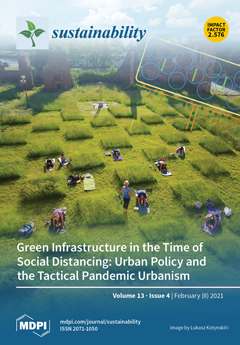Due to the scarcity of water, raw sewage effluents are often used to irrigate arable suburban soils in developing countries, which causes soil contamination with toxic metals. Soil microorganisms involved in biochemical transformations are sensitive to heavy metals contamination. The study was designed
[...] Read more.
Due to the scarcity of water, raw sewage effluents are often used to irrigate arable suburban soils in developing countries, which causes soil contamination with toxic metals. Soil microorganisms involved in biochemical transformations are sensitive to heavy metals contamination. The study was designed to investigate the effect of organic amendments on the microbial activity of cadmium (Cd), lead (Pb) and zinc (Zn) fractions and their bioavailability in soils contaminated with wastewater irrigation. Three metal contaminated soils under wastewater irrigation were collected, ground, sieved and added to incubation jars. Two organic amendments: wheat straw and chickpea straw, were applied (1%
w/
w) to the soil before incubation for 84 days at 25 °C. The CO
2-C evolution after 1, 2, 3, 5, 7, 10 and 14 days was measured and thereafter was also measured weekly. Soil samples collected at 0, 14, 28, 42, 56, 70 and 84 days after incubation were analyzed for microbial biomass carbon (MBC). Sequential extraction for metal fractionation of samples was carried out collected at 0, 28, 56 and 84 days. Three soils differed significantly in evolved MBC and ∑CO
2-C. Chickpea straw addition significantly increased soil MBC as compared to the wheat straw. Organic amendments significantly increased ∑CO
2-C evolution from the soils, which was higher from chickpea straw. The addition of crop residues did not affect total Pb, Cd and Zn contents in soils. The concentration of exchangeable, carbonate bound and residual fractions of Pb, Cd and Zn decreased (6–27%), while the organic matter bound fraction increased (4–75%) with straw addition. Overall, the organic amendments improved microbial activity and reduce the bioavailability of toxic metals in wastewater irrigated soils. Furthermore, organic amendments not only reduce economic losses as they are cheap to produce but also minimize human health risks from heavy metals by hindering their entry into the food chain.
Full article





